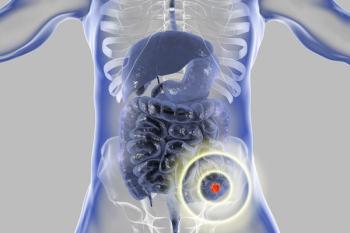
Using Pharmacokinetics to Optimize Older Chemotherapeutic Agents
The landscape of cancer therapy is shifting from traditional cytotoxic chemotherapy towards targeted therapy with agents like tyrosine kinase inhibitors and monoclonal antibodies. However, these newer agents remain costly, and traditional chemotherapy remains the backbone for treating most malignancies.
The landscape of cancer therapy is shifting from traditional cytotoxic chemotherapy towards targeted therapy with agents like tyrosine kinase inhibitors and monoclonal antibodies. However, these newer agents remain costly, and traditional chemotherapy remains the backbone for treating most malignancies. Genotype-guided therapy is usually considered the more common and “sexy” method for individualizing cancer treatment, though pharmacokinetic (PK)-guided therapy also has a role in practice. With growing healthcare costs, optimizing the less expensive, well-established cytotoxic chemotherapy agents such as 5-fluorouracil (5-FU) is an attractive option. The clinical use of PK-guided 5-FU and the cost-effectiveness of this approach were assessed in two abstracts presented at the 2014 ASCO Annual Meeting (abstracts
5-FU has remained the backbone of colorectal cancer therapy for more than 40 years. The combination of FU with leucovorin and either oxaliplatin (FOLFOX) or irinotecan (FOLFIRI), along with bevacizumab, is the recommended first-line therapy for patients with metastatic colorectal cancer. Selected patients with locally advanced colorectal cancer also receive FOLFOX in the adjuvant setting. High inter-patient variability in drug disposition makes the traditional method of body surface area (BSA) dosing inadequate for achieving optimal therapeutic outcome in a large proportion of patients. Up to a third of patients may develop severe toxicities, while half of patients receiving conventional dosing failed to respond to therapy as a result of underdosing, despite strict adherence to protocol. A correlation between FU toxicity and systemic exposure, as measured by the area under the concentration-time curve (AUC), has been consistently observed in numerous studies involving continuous infusion of FU. This indicates that individualization of FU therapy may be a worthy pursuit to optimize its use. Previous studies on efficacy benefits using PK-guided FU in colorectal cancer patients have been reported in terms of improved progression-free and overall survival, along with decreased toxicity.[3,4]
Braiteh et al reported the use of a commercially available assay (My5-FU™ by Saladax Biomedical Laboratories) to detect 5-FU levels in patients receiving the drug by continuous infusion.[1] A single blood sample was taken 6 hours after the start of the continuous infusion and results were used to calculate the AUC, with a goal target of 20–30 mg*hr/mL. A previously published algorithm was used to adjust the drug dose into the target concentration range after each cycle.[5] Three-hundred and eighty colorectal cancer patients who provided 1,000 samples across 70 different academic and community practice sites were evaluated. The first 5-FU cycle (obtained from BSA-guided dosing) was below range 50% of the time and above range 12% of the time. After dose adjustment, 52% of patients were able to achieve the recommended range in the subsequent cycle if the dosing algorithm was followed. However, the retrospective nature of this trial limited assessment of outcomes, including toxicity and effectiveness.
A second group assessed the cost-effectiveness of this approach using the same test in colorectal cancer patients receiving FOLFOX treatment, either using BSA- or PK-guided therapy.[2] Using a cost of $400 for the 5-FU PK assay, a Markov model was developed to assess the primary outcome of incremental cost per quality-adjusted life year (QALY) gained. A $50,000 QALY threshold was determined to be cost-effective. It was found that PK-guided FOLFOX provided 2.03 QALY (cost of $50,205) compared with BSA-guided FOLFOX, which provided 1.46 QALY ($37,173). The incremental cost-effectiveness ratio for PK-guided FOLFOX was below $50,000 QALY using both univariate and probabilistic sensitivity analyses, suggesting cost-effectiveness of the approach.
The feasibility of utilizing a PK-guided 5-FU dosing algorithm in colorectal cancer patients receiving FOLFOX, along with the favorable cost-effectiveness of the dosing strategy, support the use of future studies to further assess the clinical benefits of this dosing strategy.
References:
1. Braiteh FS, Salamone SJ, Li Y, et al. Pharmacokinetic (PK)-guided optimization of 5-fluorouracil (5FU) exposure in colorectal cancer (CRC) patients: U.S.-based clinical practices experience. J Clin Oncol 32:5s, 2014 (suppl; abstr 3574).
2. Goldstein DA, Chen Q, Howard DH, et al. Cost-effectiveness analysis of pharmacokinetic-guided (PK) 5-fluorouracil (5FU) when combined with leucovorin and oxaliplatin (FOLFOX) chemotherapy for metastatic colorectal cancer (mCRC). J Clin Oncol 32:5s, 2014 (suppl; abstr 6527).
3. Gamelin E, Delva R, Jacob J, et al. Individual fluorouracil dose adjustment based on pharmacokinetic follow-up compared with conventional dosage: results of a multicenter randomized trial of patients with metastatic colorectal cancer. J Clin Oncol. 2008;26:2099-105.
4. Gamelin E, Capitain O, Morel A, et al. Comparison of two patient cohorts treated in parallel for advanced colorectal cancer with a simplified FOLFOX 4 regimen with or without 5-FU therapeutic dose management. 2009 Gastrointestinal Cancers Symposium. Abstract 356.
5. Kaldate RR, Haregewoin A, Grier CE, et al. Modeling the 5-fluorouracil area under the curve versus dose relationship to develop a pharmacokinetic dosing algorithm for colorectal cancer patients receiving FOLFOX6. Oncologist. 2012;17:296-302.
Newsletter
Stay up to date on recent advances in the multidisciplinary approach to cancer.





